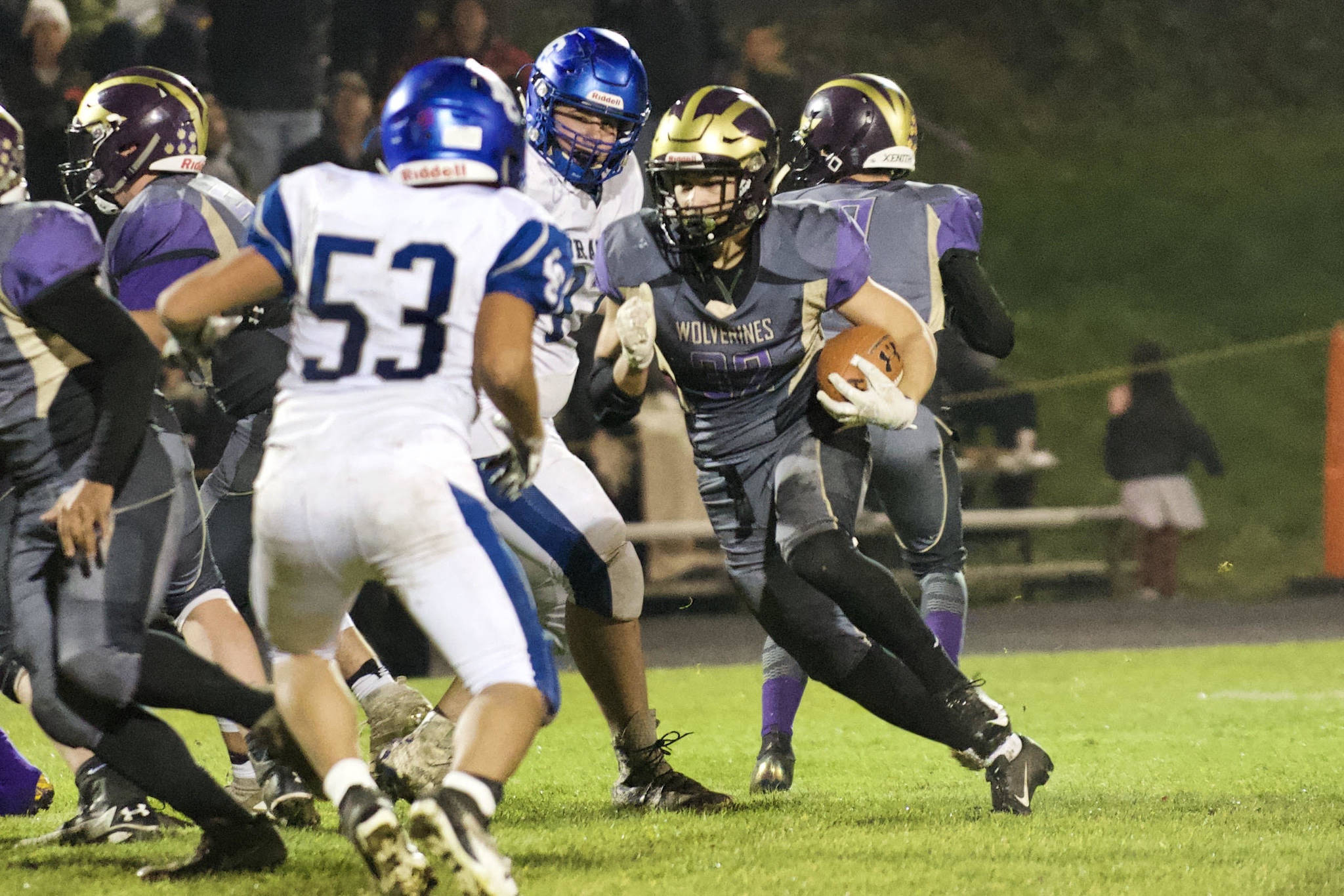Washington’s high school athletics governing body announced its revised plans for the upcoming school year Tuesday evening, and football is moving from the fall to the spring.
The Washington Interscholastic Activities Association released its revised sports season calendar for 2020-21, as schools attempt to navigate how to reopen amidst the coronavirus pandemic. The result is a switch from the standard three athletics seasons to four truncated seasons, and fall’s contact sports — including football — are being delayed six months.
“What we’re really focused on is making decisions on what we know, and I think today is an example of that,” WIAA executive board president Greg Whitmore said during a Zoom call with the media, which immediately followed a board meeting. “I can’t say we know anything for sure, but there was no one in the virtual board room who thought we could get the high-risk sport of football played this fall. It doesn’t look like the state of COVID was going to allow us to do that.”
Fall sports were originally scheduled to begin practices in August, with football starting on Aug. 19 and the rest starting on Aug. 24.
However, the plan is now to have the fall sports considered low-risk with regards to the spread of coronavirus — cross country, golf, tennis and possibly girls swimming — be part of Season 1, which begins practices on Sept. 7 and runs through Nov. 8.
Meanwhile, the higher-risk fall sports — football, volleyball, girls soccer and possibly girls swimming — would be part of a newly-crafted Season 3, which would begin practices Feb. 22 for football and March 1 for other sports, then conclude May 9 for football and May 2 for the others.
The traditional winter sports — basketball, wrestling, boys swimming — comprise Season 2, which begins practices on Jan. 4 and concludes March 7. The traditional spring sports — track and field, baseball, softball, boys soccer, and tennis and golf postseasons — would begin practices on April 26 and conclude June 27.
WIAA Executive Director Mick Hoffman stressed that everything is subject to change, depending on the situation with coronavirus.
“Please understand it’s an incredibly fluid situation,” Hoffman said during the Zoom call. “Where we’re at now could change tomorrow. Literally during the meeting we were notified about the possibility of several schools making announcements about online learning. Because this is happening so incredibly fast we want to make sure we’re giving schools information to make plans, but also make sure everyone understands that when we look at dates, they’re definitely written in pencil.”
One factor forcing the plan to be flexible is that sports are tied to Washington State’s Safe Start plan. The high school sports considered low-risk can only begin when a county has reached Phase 3 of the Safe Start plan, moderate-risk sports can only begin in Phase 4, and high-risk sports (including football) can only begin in Phase 4-plus, which has yet to be outlined by the state. The majority of the state’s counties, including Snohomish County, are in Phase 2, and the state has a freeze in place through at least July 28.
The other main issue affecting sports being allowed is whether schools open for in-person instruction. Whitmore said that the WIAA doesn’t yet know whether sports will happen if school buildings are closed, but he said many school district superintendents indicated reluctance to allow sports if classrooms weren’t open.
If the state or the school districts are not in a position to allow sports by September 7, the contingency plan is to move the Season 1 sports into Season 3. No contingency plan has been created for if sports are still not allowed by the start of Season 2.
Even if sports are allowed, the WIAA is preparing to be flexible not only with dates, but also with regards to rule changes, scheduling and postseason formats. Hoffman even floated the idea, given the likelihood of different counties being in different phases, of regionalizing the postseason and having multiple state champions at each classification.
Once sports begin, testing will not be required for athletes, but health screenings will be conducted daily by coaches. If a player tests positive, all those in close contact will be required to quarantine for 14 days. Hoffman acknowledged that may force a team to be removed from competition.
As for spectators, Hoffman said the Washington State Department of Health will provide the guidelines. However, the sports in Season 1 lend themselves to outdoor spacing, so Hoffman anticipates spectators would be allowed, at least in Season 1.
“We want to get kids back in school, back on the field, back on the court as quick as we can,” Whitmore said. “It’s that balancing act, and we’re going to do all we can from the executive board level to see that that happens.”




